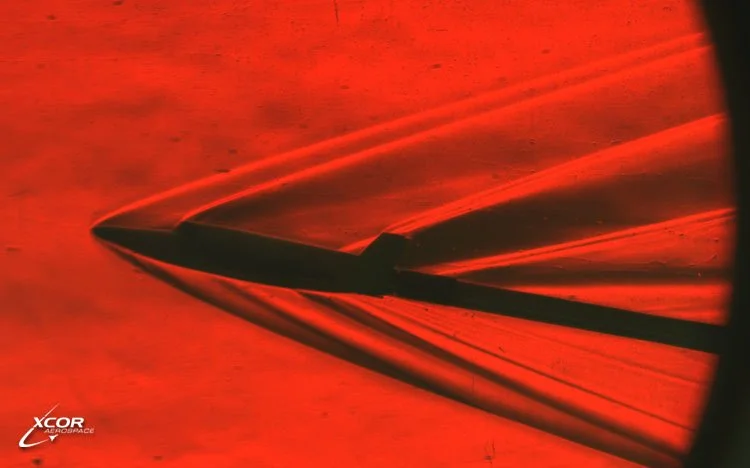Schlieren photographs
Above is an image of of the Lynx supersonic wind tunnel model being photographed using the ‘schlieren technique. You may have seen this photo in a press release after some of our earlier supersonic wind tunnel tests.
‘But what is schlieren?’ you ask.
As it turns out, schlieren photography is the brain child of German physicist August Toepler, who in 1864 developed the technique to analyze and understand supersonic motion. “Schlieren” in German means streak “streaks.” As is visible in the image above, shock waves appear as streaks across the image emanating from the edges of the model. These streaks reveal changes in air density around our wind tunnel model, and this helps to determine where geometry changes will be needed for improved aerodynamic performance in a given environment.
A schlieren image is captured using a sharply focused collimated light that is reflected into a camera from a curved mirror on the other side of the model. Where airflow is affected by the model, the air density changes, causing the beam to refract differently in low pressure areas versus high pressure areas. Think of heat mirages during the summertime, these are an every day example of that same principle!
Next week we will take a break from the technical and introduce you to some XCOR’ians.
